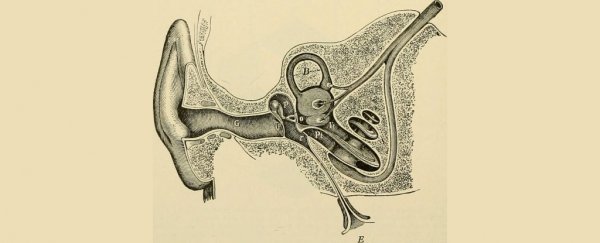Bugs crawling into the soft, warm holes of our ears, looking for a nice place to find food and shelter - it's the stuff of nightmares. But that's what happened to a 9-year-old boy in Connecticut.
WARNING: There is a picture below. It's pretty gross.
He didn't even notice it happening. He had been playing with friends at school, and he heard a strange buzzing noise in his right ear. After that he started noticing something just didn't feel right - it felt like there was something in his ear.
Was there ever.
There was no pain, no tinnitus, and no hearing loss, but the situation was uncomfortable enough that his parents took him to see a doctor. And there it was confirmed: otoacariasis, the infestation of the ear canal by an arthropod.
In this specific case, the invader was a single Dermacentor variabilis, the American dog tick. It had made itself right at home, burrowing into the boy's tympanic membrane: the thin layer of tissue that detects the vibrations of sound, more commonly known as the eardrum.
 (Kasle & Waldman, NEJM, 2019)
(Kasle & Waldman, NEJM, 2019)
The tick's capitulum - or head - was so deeply embedded in the skin of the boy's eardrum that the patient had to be transferred to the operating room for removal under general anaesthetic.
Using an operative microscope and a Day ear hook (which looks a little like a crochet hook), the tick was successfully removed. (You can read more about the case here.)
Here's the good news. Tick otoacariasis in humans is actually pretty rare. But that doesn't make you safe. If there's going to be something crawling into your ear, it's far more likely to be a cockroach thinking your earwax seems like a tasty snack.
There's other bad news, too. Ticks can transmit some pretty nasty diseases, such as Lyme disease, typhus, meningoencephalitis, haemorrhagic fever… or even make you allergic to meat.
Luckily, the boy in this case escaped without serious repercussions. After removing the tick, the doctors gave him some eardrops for his injured eardrum, and a month later he remained symptom-free.
Except, perhaps, for a lifetime's supply of nightmare fuel.
The case was reported in the New England Journal of Medicine.
